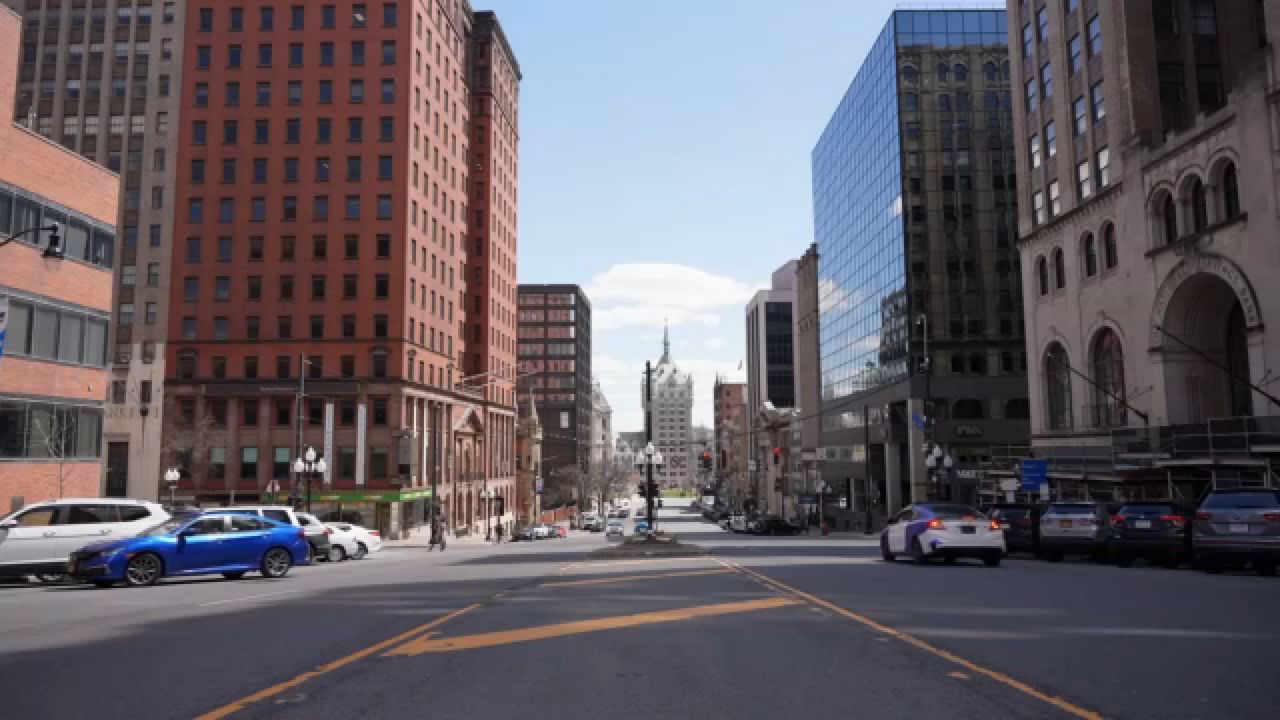It’s been nearly 10 years since New York State first asked the question: could handing out $10 million checks be the turning point for the state’s struggling downtowns?
The Downtown Revitalization Initiative, a series of $10 million grants awarded to cities in bursts based on an application submitted by the local municipality, seeks to use targeted investments in local projects to spur long-term growth.
Spectrum News 1 spoke with two lawmakers, one Democrat and one Republican from opposite ends of the state, who both agree that the program has many of New York’s smaller cities on the road to a brighter future, even if they don’t agree on every aspect of its implementation.
“Ten million dollars injected into a downtown into a defined area can really be a game-changer,” Assemblymember John McDonald said during a walk-through downtown Cohoes Friday.
He represents two cities which have received grants, Cohoes and Troy, with nearby Watervliet and Rensselaer looking to get in on the promise of progress. McDonald has nothing but positive things to say about the program, and remarked that it’s a dream come true for local officials.
“I was a former mayor for 13 years here,” he said of Cohoes. “This is a program I wish I had the opportunity to participate in as a mayor here.”
He argued the grants could play a role in shifting the perception that the Capital Region’s industrial population centers, where the potential of attractive scenery and historic Italianate storefronts is often overshadowed by shuttered factory buildings and pothole filled streets, are past their prime.
“People who travel around the country like to talk about these cities they go to,” he said. “The reality is here in the Capital Region we have a lot of great cities here, and this DRI program is helping to rediscover these gems.”
The key, McDonald explained, is making targeted investments that will help the city put on a bright face to attract further outside investment.
“I know there are developers who are going through the process now of wanting to build some new apartments here downtown which is going to provide reasonable working-class housing opportunity,” he said.
Walter Mosley, New York’s secretary of state, told Spectrum News 1 that the program has invested around $900 million in 91 communities. He also pointed to the success of the state’s NY Forward program which awards smaller grants to smaller municipalities.
When it comes to making targeted investment work, he said the city of Oswego takes home the gold.
“For every dollar that was invested through the DRI, $6 was invested by local government, the private sector,” he said.
He explained that the DRI program isn’t intended to be the “sole solution,” and that’s why cities take the lead in crafting applications and ultimately choosing which projects will spur that intended investment.
“Any time we’re able to invest in communities while also allowing those communities to lead in terms of what they believe is the best way to invest is a win-win for that municipality,” he said.
Republican Assemblymember Joe Sempolinski represents several communities that have received grants from both programs including Olean and Cattaraugus. He also described the grants as a winner for New York’s smaller upstate cities.
“Any time people are making investments in the 148th Assembly District, I feel positive about it,” he said.
While the state’s larger cities like Albany, which is receiving $400 million as part of the state budget, or Syracuse which saw the state push relentlessly to land Micron’s semiconductor plant in the nearby town of Clay, may need a bigger boost — he feels that for smaller municipalities, the program does have the potential to be a major factor in righting the ship.
“When it is a smaller community, $10 million can still be a pretty large investment in the communities I represent,” he said.
But he does have his criticisms of the program, from its very premise to what he describes “strings attached.” That includes a requirement that municipalities at least apply to be a “pro housing” community, a state designation which indicates a community is taking active steps to promote affordable housing development and is a prerequisite for multiple economic development programs including DRI.
“That leaves me with some concern,” he said of the requirement. “I philosophically believe in local control, and I would want every community to be treated equally when applying into state programs regardless of the decisions they have made in a particular policy space, because it may be what fits them and their community.”
Perhaps more fundamentally, he blames past and current New York State policy for the program having to exist in the first place, even if he largely supports its intent under the circumstances.
“I wish we were in a world where our business climate was such that things happened organically,” he said.
As for the pro-housing stipulation, Mosley defended it being baked into DRI and NY Forward.
“You have to have the ability and desire to promote affordable housing at all market rates,” he said. “We’re really proud of the fact that over the several years we’ve been in place we’ve created over 4,200 units of affordable housing, nearly 40% are either workforce or permanent affordable housing. Once you have housing, you’re taking on a holistic approach that will allow you to provide a strategy that is synergistic toward making sure we are planning for future goals and future New Yorkers.”
